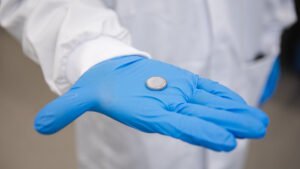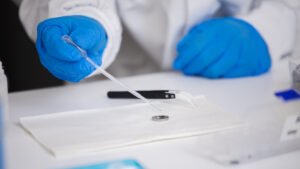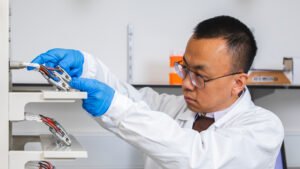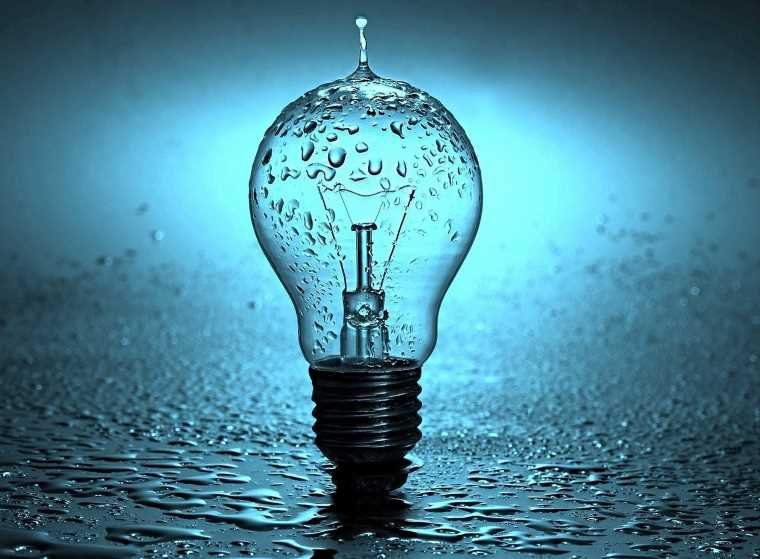An international team of researchers and industry collaborators say they have invented the world’s first water batteries.
Unlike popular lithium-ion batteries, which power everything from mobile phones to electric cars but are made with dangerous and toxic electrolytes, these new batteries use only water. The result is an energy storage device that is less toxic, fully recyclable, and one that will never catch fire or explode.
Although the performance of water batteries is still short of lithium-ion batteries, their inventors say numerous advances and planned improvements should close that gap within the next five to ten years.


The Key to Water Batteries Really is the Water
In a traditional battery, organic electrolytes allow electric current to flow between the positive and negative terminals. In lithium-ion batteries, a liquid solvent that dissolves lithium salt acts as the electrolyte. Unfortunately, these materials often don’t react well to high temperatures or pressures. In the worst cases, they can burn up electronic devices, set car engines on fire, or even explode.
Hoping to find a better alternative, an international team of research scientists led by RMIT University Distinguished Professor Tianyi Ma and selected industry partners figured out a way to replace this dangerous and often toxic electrolyte with plain old H2O, a.k.a. water. The result is an energy storage medium that works just like a lithium-ion battery but without all of the unwanted risks.


“What we design and manufacture are called aqueous metal-ion batteries – or we can call them water batteries,” said Ma from RMIT’s School of Science.
The battery’s inventors also say that along with increased safety, their battery is more environmentally friendly. This issue has also plagued traditional batteries since they are difficult to dispose of after they are no longer useful.
“Addressing end-of-life disposal challenges that consumers, industry, and governments globally face with current energy storage technology, our batteries can be safely disassembled, and the materials can be reused or recycled,” Ma said.
The professor also said that their water batteries don’t require any exotic materials or other materials but instead can be made from easily accessible, low-cost materials. This will be critical when attempting to bring water batteries to the marketplace.
“We use materials such as magnesium and zinc that are abundant in nature, inexpensive, and less toxic than alternatives used in other kinds of batteries,” Ma explained, “which helps to lower manufacturing costs and reduces risks to human health and the environment.”


Team Continuing to Improve Performance and Lifespan
Regardless of the increased safety and reduced toxicity offered by water batteries, the researchers know that they will not become commercially viable until their lifespan and performance equal or exceed lithium-ion batteries. Fortunately, the inventors say that after adding a layer of bismuth and its oxide to the battery terminals to prevent the growth of metallic dendrites, their water batteries last just about as long as their competitors.
“Our batteries now last significantly longer – comparable to the commercial lithium-ion batteries in the market – making them ideal for high-speed and intensive use in real-world applications,” Ma said.
As for power density, the team says they are still well behind lithium-ion but closing fast.
“We recently made a magnesium-ion water battery that has an energy density of 75 watt-hours per kilogram (Wh kg-1) – up to 30% that of the latest Tesla car batteries,” they said.
The team also says they have a clear path to improving the battery’s energy density. The first step is to include new nanomaterials into the electrolyte, with the likeliest candidate being magnesium. If successful, the added magnesium could allow them to reach competitive energy storage levels within a few years.


“Magnesium-ion water batteries have the potential to replace lead-acid battery in the short term – like one to three years – and to replace potentially lithium-ion battery in the long term, 5 to 10 years from now,” Ma explained. “Magnesium is lighter than the alternative metals, including zinc and nickel, has a greater potential energy density and will enable batteries with faster charging times and better capability to support power-hungry devices and applications.”
Until then, the research team says their current batteries could already be out to use in large-scale energy storage facilities, especially given their increased safety and reduced toxicity over conventional energy storage technologies. Still, they admit that the end goal is to offer a safer alternative to current batteries that is able to match or even exceed their lifecycle and energy densities and that can be used in cars, homes, and everyday electronic devices.
“As our technology advances, other kinds of smaller-scale energy storage applications, such as powering people’s homes and entertainment devices, could become a reality,” Ma said.
Christopher Plain is a Science Fiction and Fantasy novelist and Head Science Writer at The Debrief. Follow and connect with him on X, learn about his books at plainfiction.com, or email him directly at christopher@thedebrief.org.

